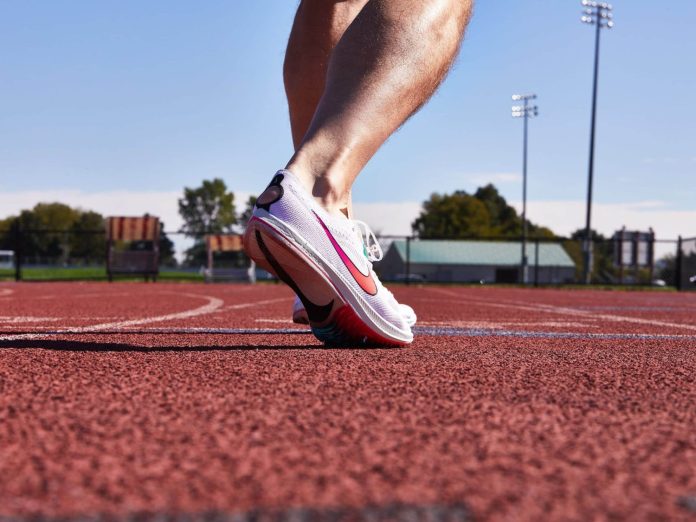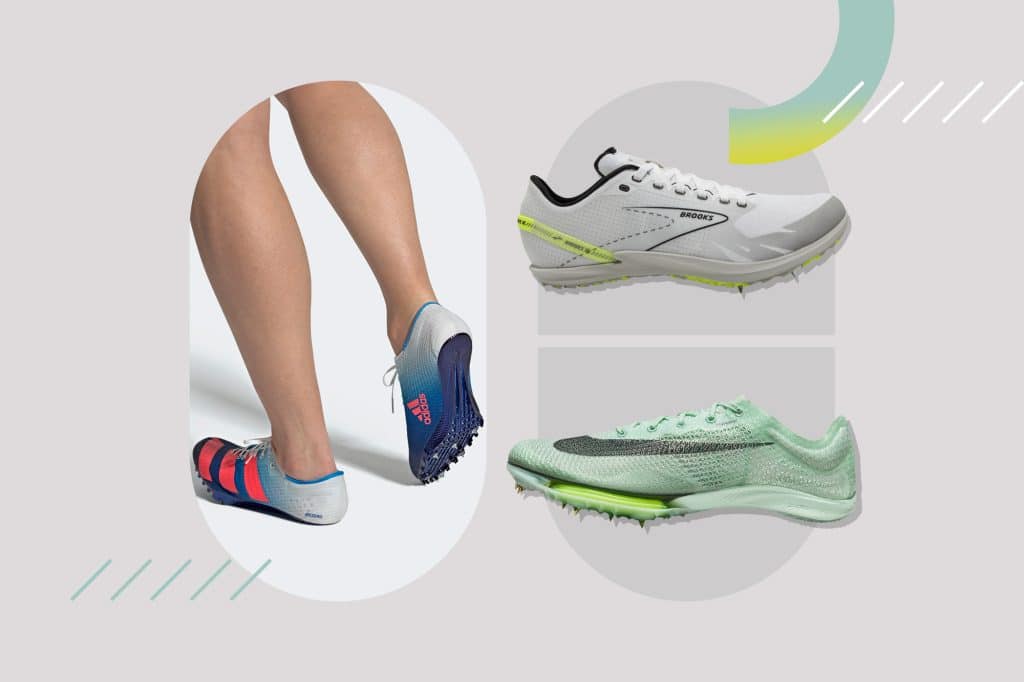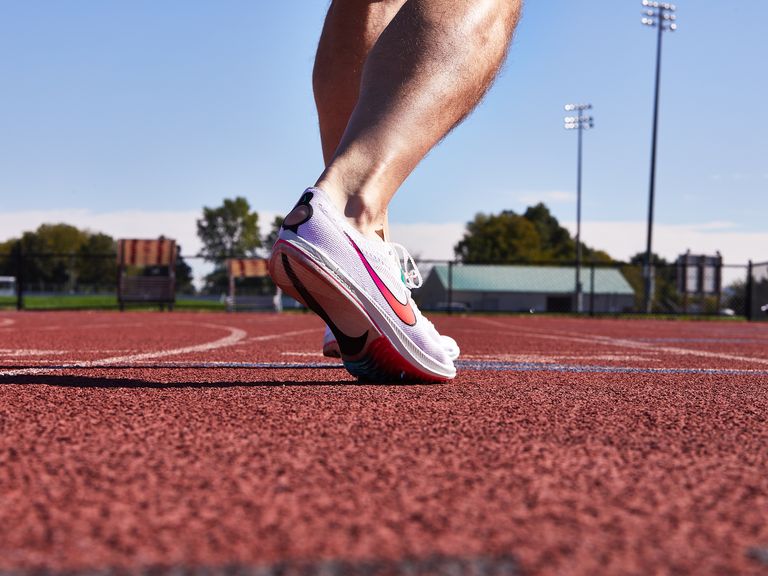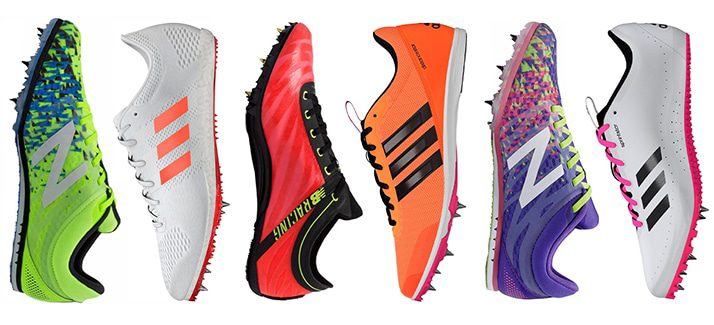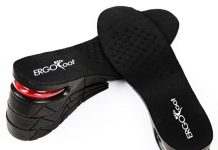If you’re a runner, you’ve probably wondered if you need different shoes for sprinting and long-distance running. The answer?
It depends on your goals and preferences. While some runners choose to use the same shoes for both activities, others find that having specific shoes for each type of running can enhance performance and prevent injuries.
In this article, we’ll explore the differences between sprinting and long-distance running shoes, helping you make an informed decision about what’s best for your feet and your running endeavors.
So let’s lace up and find out if that need for speed calls for a different pair of kicks!
Understanding the Differences Between Sprinting and Long-Distance Running
Sprinting and long-distance running are distinct forms of running requiring different techniques and training. Not only do they have different intensities and durations, but they also engage different muscle groups, utilize different energy systems, and have varying impacts on joint health.
It’s important to understand these differences and choose the appropriate footwear for each activity to maximize your performance and reduce the risk of injuries.
Different Muscle Groups Used
One of the critical differences between sprinting and long-distance running lies in the muscle groups that are predominantly engaged. You rely heavily on your fast-twitch muscle fibers, particularly in your legs and core, to generate explosive power and speed when sprinting. These muscles include the quadriceps, hamstrings, glutes, and calves.
On the other hand, long-distance running primarily engages slow-twitch muscle fibers with greater endurance capacity. These muscles, such as the hip flexors, quadriceps, and calves, work together to provide the sustained power needed for long-distance running.
When choosing running shoes, it’s essential to consider the specific muscle groups engaged during your preferred running activity.
Sprinting shoes are typically designed to provide the necessary support and responsiveness for explosive power, while long-distance running shoes focus on cushioning and stability to support endurance.
Variations in Stride Length and Foot Strike
Another difference between sprinting and long-distance running lies in the variations in stride length and foot strike pattern.
In sprinting, the stride length tends to be shorter, allowing for quicker turnover and increased explosiveness. Sprinters often strike the ground with the forefoot or midfoot to propel themselves forward more efficiently.
In contrast, long-distance runners generally have longer stride lengths to maintain a steady pace over extended distances. They typically utilize a heel-to-toe foot strike pattern, providing better shock absorption and helping distribute the impact forces more evenly.
These variations in stride length and foot strike pattern are crucial in determining the type of shoe most suitable for each activity. Sprinting shoes often have minimal heel-to-toe drop and responsive cushioning, while long-distance running shoes prioritize heel cushioning and support for impact absorption.
Energy Systems Utilized
Sprinting and long-distance running also differ in the energy systems they rely on to fuel performance. Sprinting primarily relies on the anaerobic system, which produces energy quickly but only for short bursts. This system relies heavily on the stored phosphocreatine in the muscles and does not require significant amounts of oxygen.
In contrast, long-distance running predominantly relies on the aerobic system, which provides sustained energy through the oxygen-dependent breakdown of carbohydrates and fats. This system is crucial for endurance activities and allows for prolonged exertion.
Considering the different energy systems utilized, sprinting shoes often prioritize lightweight construction and minimal cushioning to enhance speed and responsiveness. On the other hand, long-distance running shoes focus on providing optimal cushioning and support to help reduce fatigue and support the sustained efforts required.
Impact on Joint Health
The impact on joint health is another aspect that distinguishes sprinting from long-distance running. Sprinting is a high-impact activity that stresses the joints, especially the ankles, knees, and hips. This is due to the explosive power generation and the increased ground reaction forces experienced during sprinting.
In contrast, long-distance running is a low-impact activity that places less stress on the joints due to the steady and sustained effort involved. However, the repetitive nature of long-distance running can still lead to overuse injuries, particularly if proper footwear and training techniques are not adhered to.
Considering the impact on joint health, sprinting, and long-distance running shoes aim to provide adequate cushioning and support. However, sprinting shoes may have a firmer midsole to minimize energy loss and maximize efficiency. In contrast, long-distance running shoes prioritize enhanced shock absorption to protect the joints from repetitive impact.
Factors to Consider When Choosing Running Shoes
Several factors should be considered when choosing running shoes for any running activity. These factors, ranging from foot type and pronation to cushioning and breathability, play a crucial role in determining the comfort, performance, and overall running experience.
Foot Type and Pronation
Understanding your foot type and pronation is essential when selecting running shoes. Pronation refers to the natural inward rolling motion of the foot during each step.
It is a normal movement that helps with shock absorption and weight distribution. However, excessive pronation or supination (outward rolling) can lead to biomechanical imbalances and potential injuries.
There are three main types of pronation: neutral, overpronation, and underpronation (also known as supination). Neutral pronation occurs when the foot strikes the ground evenly and efficiently moves through the gait cycle. Overpronation occurs when the arches collapse excessively, resulting in the foot rolling inward too far. Underpronation, on the other hand, occurs when the foot does not roll inward enough, leading to a more rigid foot strike.
Understanding your foot type and pronation can help you choose the right running shoe category, as different shoes are designed to cater to specific pronation types. Stability shoes are suitable for overpronators, neutral shoes work well for those with a neutral gait, and motion control shoes are ideal for severe overpronation.
Cushioning and Support
Cushioning and support are crucial factors to consider when choosing running shoes, regardless of the type of running activity you engage in. Cushioning helps absorb impact forces generated through running, reducing joint and muscle stress. Conversely, support helps maintain proper foot alignment and prevents excessive rolling or twisting motions that can lead to injuries.
The cushioning and support needed can vary based on personal preference, body weight, running style, and the specific demands of your chosen activity. Some runners prefer a more minimalist shoe with minimal cushioning, as it provides a closer connection to the ground. Others may require maximum cushioning to protect against the repetitive impact of long-distance running or the intense forces generated during sprinting.
It’s essential to find a balance between cushioning and support that suits your needs, as excessive cushioning can impact stability and responsiveness. In contrast, inadequate cushioning can increase the risk of injuries.
Flexibility and Responsiveness
The flexibility and responsiveness of running shoes are essential for an efficient and comfortable running experience. Flexibility refers to how easily the shoes bend and flex along the sole, allowing for a more natural foot movement during the running gait cycle. Responsiveness refers to how quickly the shoes return energy to propel you forward.
The ideal level of flexibility and responsiveness depends on your running style and the specific demands of your chosen activity. Sprinting shoes often have more flexibility and responsiveness to maximize speed and quick turnover. On the other hand, long-distance running shoes may have a slightly stiffer sole to provide added support and shock absorption over extended distances.
Try on different shoes and test their flexibility and responsiveness to find the right balance that suits your running style and preferences.
Weight and Breathability
The weight and breathability of running shoes can significantly impact your overall running performance and comfort. Sprinters generally prefer lighter shoes, allowing quicker movements and reducing energy expenditure. However, for long-distance runners, the weight of the shoes may be less of a concern, as endurance is the primary focus.
Breathability is crucial for all types of running, as it helps wick away moisture and heat, keeping your feet dry and comfortable. Proper ventilation in running shoes can reduce the risk of blisters, hot spots, and the development of fungal infections.
When choosing running shoes, consider the weight and breathability that best align with your running activities and preferences. Remember that lightweight shoes may enhance speed and agility, but they may not provide as much cushioning or support as heavier options.
Terrain and Surface
Lastly, your choice of running shoes should be influenced by the type of terrain and surface you intend to run on. The texture, firmness, and evenness of the surface can significantly impact the performance and durability of your shoes.
A smooth and consistent track surface is often ideal for sprinters, as it provides the necessary traction for explosive movements. Sprinting shoes are designed with this specific surface in mind, incorporating features such as track spikes or rubber outsoles for enhanced grip and traction.
On the other hand, long-distance runners may encounter various terrains, including roads, trails, and uneven surfaces. Running shoes designed for long distances often have durable outsoles with multidirectional lugs for improved traction and stability on different surfaces.
Considering the terrain and surface you regularly run on, you can choose running shoes designed to provide the proper grip and stability for optimum performance and safety.
The Importance of Proper Footwear for Sprinting
When it comes to sprinting, choosing the proper footwear can significantly impact your performance, reduce the risk of injuries, and optimize your biomechanics and efficiency. Sprinting requires explosive power, quick turnover, and maximum speed, making specific features and characteristics crucial for sprinting shoes.
Enhancing Speed and Performance
Sprinting shoes are specifically designed to enhance speed and overall performance. These shoes are typically lightweight, minimizing excess weight that could slow you down. The reduced weight allows for quicker movements and less energy expenditure, improving speed and acceleration.
In addition to being lightweight, sprinting shoes often have a minimal heel-to-toe drop, allowing for a more efficient foot strike and maximizing energy transfer from the foot to the ground. The lower heel allows for a more forward-leaning position, promoting a powerful toe-off and propelling you forward with each stride.
The materials used in sprinting shoes also contribute to enhanced speed and performance. These shoes often incorporate advanced technologies, such as responsive midsoles or carbon fiber plates, to provide optimal energy return and propulsion.
By choosing the right sprinting shoes, you can take advantage of these specialized features designed to enhance your speed and overall sprinting performance.
Minimizing the Risk of Injuries
Proper footwear is crucial in minimizing the risk of injuries during sprinting. Sprinting puts significant stress on your lower body, particularly your ankles, knees, and hips. Excessive movements and high-impact forces can lead to various injuries if not adequately supported and protected.
Sprinting shoes are designed with specific features to minimize the risk of injuries. They often provide a snug and secure fit to prevent excessive movement or slippage within the shoe. This stability helps reduce the risk of sprained ankles or other ankle-related injuries.
Additionally, sprinting shoes prioritize the necessary cushioning and support to absorb the impact forces generated during sprinting. The midsole and outsole of these shoes are engineered to provide optimal shock absorption and distribute the forces more evenly, reducing the strain on your joints and muscles.
By wearing sprinting shoes that offer the necessary support and cushioning, you can help minimize the risk of common sprinting injuries and ensure a safer and more enjoyable running experience.
Impact on Biomechanics and Efficiency
The biomechanics and efficiency of your running form are significantly influenced by the footwear you choose for sprinting. Sprinting shoes are specifically designed to optimize your biomechanics and increase your efficiency throughout the sprinting motion.
The minimal heel-to-toe drop in sprinting shoes promotes a more forefoot or midfoot strike, ideal for generating explosive power and speed. This striking pattern allows for a more efficient energy transfer throughout the foot, enhancing overall performance and minimizing energy loss.
Sprinting shoes also provide greater flexibility in the forefoot area, allowing for a more natural toe-off and improved running mechanics. The increased flexibility facilitates a faster turnover and reduces the risk of a sluggish stride.
Choosing the appropriate sprinting shoes can significantly impact your biomechanics and overall running efficiency, enabling you to maximize your speed and performance.
Choosing Lightweight and Responsive Shoes
Lightweight and responsive shoes are a vital feature of sprinting footwear. As mentioned earlier, lightweight shoes help minimize unnecessary weight that could hinder your speed and agility. The reduced weight allows for quicker movements and enhanced performance.
In addition to being lightweight, sprinting shoes prioritize responsiveness. The midsole materials and design are engineered to store and release energy with each footstrike, propelling you forward and maximizing your power output. The responsiveness of sprinting shoes allows for faster acceleration and improved overall performance.
You can optimize your speed, agility, and explosive power during sprinting activities by selecting lightweight and responsive sprinting shoes.
The Role of Running Shoes in Long-Distance Running
Choosing the right running shoes is equally essential for long-distance running as sprinting. Long-distance running requires sustained effort over extended periods, placing different demands on the body. The right pair of running shoes can provide the necessary cushioning, support, and protection to promote comfort, endurance, and joint health.
Providing Optimal Cushioning and Support
Long-distance running shoes prioritize optimal cushioning and support to reduce the impact forces experienced during extended periods of running. The repetitive nature of long-distance running can strain the joints and muscles, leading to fatigue and potential injuries if not properly supported.
Long-distance running shoes typically feature thicker midsoles and ample cushioning to absorb the impact forces generated with each stride. The cushioning helps protect the joints and muscles, reducing the risk of overuse injuries and enhancing overall comfort during long runs.
Support is another crucial aspect of long-distance running shoes. These shoes often provide stability features that help support proper foot alignment and prevent excessive pronation or supination. The support contributes to a more efficient running form, reducing the risk of biomechanical imbalances and related injuries.
Choosing long-distance running shoes that provide optimal cushioning and support ensures a more comfortable and enjoyable running experience while minimizing the risk of long-term overuse injuries.
Promoting Comfort and Endurance
Comfort and endurance are essential factors for long-distance runners. Long runs can be physically and mentally challenging, and the right pair of running shoes can significantly contribute to your overall comfort and ability to sustain your efforts.
Long-distance running shoes often prioritize comfort features, such as plush cushioning, breathable materials, and a roomy toe box. These elements help reduce pressure points, prevent blisters, and provide a more comfortable fit throughout long runs.
Endurance is another crucial aspect of long-distance running. The prolonged duration of these runs necessitates durable and long-lasting shoes that can withstand repetitive impact and stress. Long-distance running shoes often feature durable outsoles and reinforced areas to provide the necessary durability and protection for extended use.
By selecting running shoes that prioritize comfort and endurance, you can enhance your overall running experience and maintain endurance over long distances.
Protecting Joints and Reducing Impact
The protection of joints and the reduction of impact forces are essential considerations in long-distance running shoes. As mentioned earlier, the repetitive nature of long-distance running can increase strain on the joints, potentially leading to overuse injuries.
Long-distance running shoes aim to minimize the impact forces experienced during each stride. The cushioning properties of these shoes help absorb and disperse the impact forces, reducing the stress on the joints and muscles. The midsole and outsole design work synergistically to provide optimal shock absorption and energy return, balancing protection, and responsiveness.
Furthermore, long-distance running shoes often have extended outsoles and additional padding in high-impact areas like the heel or forefoot. These features further enhance impact absorption and provide targeted protection, reducing the risk of injuries caused by repetitive impact.
By choosing long-distance running shoes that prioritize joint protection and impact reduction, you can maintain the health and longevity of your joints, ultimately supporting your long-distance running endeavors.
Addressing Overpronation or Underpronation
Overpronation and underpronation (supination) are common biomechanical issues affecting long-distance runners. Overpronation refers to excessive inward rolling of the foot, while underpronation or supination refers to insufficient inward rolling. Both overpronation and underpronation can lead to biomechanical imbalances and potential injuries.
Long-distance running shoes often address these issues by providing specialized features for each pronation type. For overpronators, stability shoes are typically recommended, as they offer additional support and control to counteract excessive rolling of the foot.
This support helps maintain proper alignment and facilitates a more efficient running form.
For underpronators or supinators, cushioned or neutral shoes are often preferred. These shoes offer adequate cushioning and shock absorption to compensate for the reduced natural pronation, providing a more comfortable running experience and minimizing the risk of injuries.
Choosing long-distance running shoes that address your specific pronation needs can improve your running form, reduce the risk of injuries, and optimize your long-distance running performance.
Understanding Pronation and Choosing the Right Shoes
Understanding pronation and its impact on running biomechanics is crucial for choosing the right pair of running shoes. Pronation is a natural movement of the foot that helps with shock absorption and weight distribution during each step.
However, excessive pronation or supination can lead to imbalances and potential injuries. Different shoe categories are designed to accommodate various pronation types and provide appropriate support and stability.
Explaining Pronation and Supination
Pronation is the natural inward rolling motion of the foot that occurs during normal walking or running. It is part of the body’s natural shock absorption mechanism and helps distribute the forces evenly throughout the foot and lower extremities.
Conversely, supination refers to the outward rolling of the foot during the gait cycle. It is less common than pronation but can occur in individuals with high arches or specific biomechanical imbalances.
Understanding your pronation type is crucial for selecting running shoes that support and stabilize your feet and lower extremities.
Differentiating Between Overpronation and Underpronation
Overpronation and underpronation (supination) are common pronation-related issues that can affect your running biomechanics and lead to potential injuries.
Overpronation occurs when the arches of the foot collapse excessively inward during the footstrike and gait cycle. This excessive inward rolling can result in imbalances, reduced stability, and potential injuries such as shin splints, plantar fasciitis, or IT band syndrome.
Underpronation or supination, on the other hand, refers to insufficient inward rolling of the foot. This can cause increased stress on specific foot areas, such as the outer edges, and potentially lead to injuries like stress fractures, ankle sprains, or iliotibial band (IT band) syndrome.
It is understanding whether you tend to overpronate or underpronation can help you choose the appropriate running shoes that provide the necessary support and stability to minimize the risk of injuries associated with these pronation issues.
Stability, Neutral, and Motion Control Shoes
Running shoes are often categorized into three main types based on their level of support and stability: stability shoes, neutral shoes, and motion control shoes. These categories cater to different pronation types and provide varying levels of support and control.
Stability shoes are designed for runners who have mild to moderate overpronation. They feature support features like a medial post or a firmer midsole on the inner side of the shoe, which helps counteract excessive inward rolling. Stability shoes offer a good balance of cushioning, support, and flexibility for runners with overpronation.
Neutral shoes are suitable for runners with neutral gait or minimal pronation or supination. These shoes do not have significant support features for arch correction. Neutral shoes provide a cushioned and flexible platform for runners with a more efficient and natural running gait.
Motion control shoes are typically recommended for runners with severe overpronation or flat feet. These shoes offer the highest level of support and stability, incorporating additional features like a reinforced arch, firm materials, and structured support mechanisms. Motion control shoes help control excessive motion and provide maximum stability for those with significant pronation issues.
By understanding your pronation type and selecting running shoes that cater to your individual needs, you can improve your running form, reduce the risk of injuries, and enhance your overall running experience.
The Significance of Cushioning in Running Shoes
Cushioning is a significant feature in running shoes that plays a crucial role in impact absorption, shock attenuation, and overall comfort. The level and type of cushioning can significantly influence your running experience and the protection provided to your joints and muscles.
Impact Absorption and Shock Attenuation
Running is a high-impact activity that places significant stress on the joints and muscles. With each stride, the body experiences impact forces that can be detrimental if not adequately absorbed. Cushioning in running shoes helps mitigate these impact forces, reducing the strain on the body.
The cushioning properties of running shoes allow for the absorption and dissipation of impact forces throughout the shoe’s midsole and outsole. This helps minimize the stress on the joints, particularly the knees and ankles, and reduces the risk of overuse injuries.
Furthermore, proper cushioning also contributes to shock attenuation, which refers to the ability of the shoes to absorb and disperse shock waves generated upon the footstrike.
The cushioning materials and design in running shoes help dissipate the energy of impact, providing a smoother and more comfortable running experience.
Balancing Cushioning with Responsiveness
While cushioning is essential for impact absorption and shock attenuation, balancing cushioning and responsiveness is crucial. Too much cushioning can hinder responsiveness and energy transfer, potentially impacting your speed and overall running performance.
Different running activities require varying degrees of cushioning and responsiveness. Sprinting, for example, often involves minimal cushioning to maximize speed and agility. On the other hand, long-distance running necessitates greater cushioning to protect against the repetitive impact experienced over extended distances.
You can optimize your running performance and comfort by choosing running shoes that strike the right balance between cushioning and responsiveness while maintaining adequate protection and support.
Determining the Right Amount of Cushioning
Determining the right amount of cushioning in running shoes requires considering various factors, including your running style, body weight, running surface, and personal preference.
Heavier runners may benefit from additional cushioning to help absorb the more significant impact forces generated. On the other hand, lighter runners may prefer less cushioning to enhance the connection with the ground and increase their speed.
The running surface also plays a role in determining the appropriate amount of cushioning. Softer surfaces, such as trails or grass, provide natural cushioning and may require less cushioning in the shoes. More complex or uneven surfaces, such as concrete or asphalt, require greater cushioning to counteract the increased impact forces.
Personal preference also plays a significant role in determining the right amount of cushioning. Some runners prefer a softer and more cushioned feel, while others prefer a firmer and more responsive experience.
Trying on different shoes and gauging your comfort level during test runs can help you determine the optimal cushioning level for your needs.
Selecting Shoes with Adequate Padding
In addition to overall cushioning, adequate padding in running shoes can significantly enhance comfort, support, and protection. Padding refers to additional cushioning or materials strategically placed within the shoe to provide targeted support and improve comfort.
Well-padded collars and tongues in running shoes prevent rubbing and irritation around the ankle and instep areas. This padding enhances comfort and reduces the risk of abrasions or blisters.
Lateral padding or overlays can also be present in running shoes to provide additional support and stability to areas prone to excessive movement or rolling. These features can help prevent injuries and promote a more efficient running form.
When choosing running shoes, consider the presence and quality of padding to ensure a snug and comfortable fit that provides adequate support and protection throughout your runs.
Considerations for Sprinting Shoes
When it comes to sprinting shoes, several key considerations should be taken into account. Features such as stiffness and energy transfer, minimal heel-to-toe drop, grip traction, and breathability and flexibility play crucial roles in enhancing your sprinting performance and overall experience.
Stiffness and Energy Transfer
Stiffness is essential in sprinting shoes, as it allows for efficient energy transfer and improved propulsion. Sprinting requires explosive power and quick turnover; a stiffer shoe can help maximize these factors.
A stiff sole in sprinting shoes facilitates a more efficient energy transfer from the foot to the ground, improving speed and acceleration. The stiffness reduces energy loss through foot flexion, allowing for a greater push-off force and enhanced forward motion.
When considering sprinting shoes, look for models with appropriate stiffness for your specific needs and preferences. Too much stiffness can reduce comfort and a lack of flexibility, while too little stiffness may compromise energy transfer and performance.
Minimal Heel-to-Toe Drop
Minimal heel-to-toe drop, a low-profile or low-drop design, is a characteristic often found in sprinting shoes. It refers to the difference in height between the heel and the forefoot of the shoe. A minimal drop allows for a more natural footstrike and promotes a more efficient running form.
In sprinting, a minimal heel-to-toe drop helps position the body in a more forward-leaning position, which optimizes performance and energy transfer. This positioning favors a forefoot or midfoot strike, enabling quicker turnover and better power generation.
Sprinting shoes with a minimal heel-to-toe drop can improve biomechanics, enhance speed, and overall performance. However, it’s important to note that transitioning to a low-drop shoe requires a gradual adaptation process, especially if you’re accustomed to shoes with higher heel-to-toe differentials.
Grip and Traction
Grip and traction are crucial for sprinting shoes, mainly if you primarily train or compete on a track. Sprinters rely on optimal traction to generate and maintain force during explosive movements, such as sprint starts and turns.
Sprinting shoes often feature rubber outsoles or track spikes designed to enhance grip on track surfaces. Rubber outsoles offer ample traction in varying weather conditions and are suitable for training or competing on synthetic or rubberized tracks.
On the other hand, track spikes are ideal for competitive sprinters who require maximum traction and acceleration. These removable metal or ceramic spikes dig into the track surface, providing exceptional grip during sprints.
When selecting sprinting shoes, consider whether you need specific track spikes or rubber outsoles to deliver the necessary grip and traction for your sprinting activities.
Breathability and Flexibility
Breathability and flexibility are two factors that significantly contribute to overall comfort and performance in sprinting shoes. Sprinting is an intense activity that generates heat and moisture, and proper ventilation is crucial to keep your feet dry and comfortable.
Sprinting shoes with breathable uppers helps wick away moisture and improves air circulation. This prevents excessive sweating and reduces the risk of blisters and fungal infections.
Flexibility is also essential, allowing for a more natural running motion and promoting quick turnover. Sprinting shoes should have sufficient flexibility in the forefoot area to facilitate a powerful toe-off and optimal running mechanics.
Look for sprinting shoes that offer lightweight and breathable materials and adequate flexibility to ensure a comfortable and efficient sprinting experience.
Key Features of Long-Distance Running Shoes
Long-distance running shoes have specific features designed to provide the support, cushioning, and durability required for extended periods of running.
These key features, which include ample cushioning and shock absorption, a responsive midsole, a durable outsole, and a comfortable upper, contribute to overall comfort, endurance, and protection.
Ample Cushioning and Shock Absorption
Long-distance running involves sustained effort over extended periods, placing repetitive impact forces on the feet and lower extremities. Ample cushioning and shock absorption are critical features of long-distance running shoes, as they minimize the stress on your joints and muscles, reducing the risk of overuse injuries.
Long-distance running shoes typically have thicker midsoles and additional cushioning throughout the shoe. This increased cushioning helps absorb impact forces and provides a more comfortable running experience.
The midsole materials in long-distance running shoes offer optimal shock absorption and energy return, allowing for a smoother and more efficient stride. These materials help dissipate the energy generated upon the footstrike and facilitate a comfortable gait cycle.
Responsive Midsole and Energy Return
While cushioning is essential for long-distance running, a responsive midsole is equally important. A responsive midsole helps optimize energy return, allowing for efficient propulsion and enhanced running performance.
Long-distance running shoes often incorporate advanced technologies, such as responsive foam compounds or carbon fiber plates, in their midsoles. These technologies store and release energy with each footstrike, promoting a more efficient toe-off and aiding forward propulsion.
A responsive midsole enhances your speed and overall performance and reduces overall fatigue, enabling you to maintain your endurance over long distances.
Durable and Protective Outsole
The outsole of long-distance running shoes is designed to provide durability and protection over extended periods of use. Long runs involve varying terrains and surfaces, necessitating a robust outsole that can withstand the demands of different running environments.
The outsoles of long-distance running shoes often feature durable rubber compounds or carbon rubber materials that offer traction, stability, and longevity. They are engineered to withstand repetitive ground contact and friction during extended runs.
To enhance protection and durability, some long-distance running shoes incorporate additional features like extended outsoles or protective caps that shield sensitive areas, such as the toes or heels, from impact and wear.
Comfortable Upper and Fit
The upper of long-distance running shoes is vital in overall comfort, fit, and breathability. Optimal upper construction promotes a snug and secure fit, reducing slippage and potential discomfort during long runs.
Long-distance running shoes often have mesh or breathable uppers that allow for adequate air circulation and heat dissipation, preventing excessive sweating and discomfort. These materials help prevent moisture accumulation, reducing the risk of blisters and fungal infections.
Furthermore, long-distance running shoes’ upper design and lacing system contribute to a customizable fit. Runners can adjust the laces to achieve a snug fit, ensuring stability and reducing the likelihood of foot movement within the shoe.
By selecting long-distance running shoes that offer a comfortable upper and proper fit, you can enjoy a more pleasurable and supportive running experience, enabling you to go the distance.
Transitioning Between Sprinting and Long-Distance Running
Transitioning between sprinting and long-distance running requires careful planning, gradual adaptation, and an understanding of your individual preferences and needs.
While sprinting and long-distance running have distinct training methodologies and footwear requirements, some strategies can help facilitate a smooth transition between these activities.
Gradual Adaptation and Training
Transitioning from sprinting to long-distance running or vice versa requires a gradual adaptation process. The demands on your body and your training approach differ significantly between these two activities, and a sudden switch can risk overuse injuries and muscle imbalances.
To avoid injuries, gradually introduce the new activity into your training regimen. Begin by incorporating shorter bouts of the new activity and gradually increase the duration and intensity. This progressive approach allows your body to adapt to the new demands and ensures a safer transition.
Additionally, it’s essential to adjust your training techniques and strategies to match the specific requirements of the new activity. Work with a coach or trainer to develop a training plan that gradually increases the workload and includes appropriate strength and conditioning exercises.
Rotating Shoes for Varying Workouts
Rotating between different pairs of shoes for specific workouts can help optimize your performance and reduce the risk of overuse injuries. Each pair of shoes is designed to cater to specific running activities and offers different features and characteristics.
Wear shoes designed explicitly for sprinting workouts and provide the necessary support, responsiveness, and grip. These shoes are lightweight, have minimal heel-to-toe drop, and prioritize traction to enhance speed and power.
Choose shoes that provide optimal cushioning, shock absorption, and durability for long-distance running workouts. These shoes are designed for sustained efforts and provide the comfort and protection required for extended periods of running.
By rotating your shoes, you can ensure that each workout is adequately supported and tailored to the specific requirements of the activity, ultimately enhancing your performance while reducing the risk of overuse injuries.
Understanding Individual Preferences and Needs
When transitioning between sprinting and long-distance running, it’s essential to understand your individual preferences, needs, and limitations. Each runner has unique biomechanics, training backgrounds, and goals that should be considered.
Consider whether you prefer explosive, high-intensity activities or longer, endurance-based efforts. Assess your strengths and weaknesses, and tailor your training and footwear choices accordingly.
Understanding your limitations is also crucial to prevent overuse injuries and burnout. Gradually increase the intensity and duration of your training, listening to your body and taking adequate rest and recovery days as needed.
By acknowledging your individual preferences and needs, you can make informed decisions regarding your training, footwear choices, and overall running routine.
Consulting with Experts and Professionals
When choosing the right running shoes and navigating the transition between sprinting and long-distance running, seeking guidance from experts and professionals in the field can be beneficial.
These individuals can provide valuable insights, perform gait analyses, and offer recommendations tailored to your needs and goals.
Proper Shoe Fitting and Gait Analysis
One of the first steps in choosing the right running shoes is ensuring a proper fit. Ill-fitting shoes can contribute to discomfort, blisters, and potential injuries. Consulting with experts specializing in shoe fitting can help you find the right size, width, and overall fit that suits your unique foot anatomy.
Additionally, gait analysis is valuable in understanding your running mechanics and pronation tendencies. Professionals can analyze your gait pattern, foot strike, and alignment and make appropriate recommendations for shoe types that cater to your running style.
By undergoing proper shoe fitting and gait analysis, you can ensure that your running shoes are customized to your specific needs and minimize the risk of potential issues related to improper shoe selection.
Seeking Advice from Podiatrists or Sports Specialists
If you have specific foot conditions or concerns, seeking advice from podiatrists or sports specialists can provide valuable insight and recommendations. These professionals have expertise in foot and lower limb biomechanics, injuries, and treatment options, enabling them to offer specialized guidance.
Podiatrists and sports specialists can assess your foot structure, mobility, muscle imbalances, and potential risk factors. They can provide tailored recommendations for shoe types, orthotics, or exercises that can help address your individual needs and prevent or treat potential injuries.
If you have a history of foot or lower limb issues or are experiencing pain or discomfort during running, consulting with these professionals can offer valuable guidance and aid in selecting appropriate running shoes.
Testing and Trying Different Shoes
The best way to determine the right running shoes for your needs is to test and try different options.
Every runner is unique, and what works for one person may not work for another. It’s essential to experiment with different brands, models, and features to find the shoes that offer optimal support, comfort, and performance for your running style.
Visit specialized running stores that offer a wide range of running shoes and have knowledgeable staff who can guide you through the selection process. Try different shoes, walk or jog around the store, and assess their fit, comfort, and performance characteristics.
Testing shoes on surfaces like concrete or grass can also provide insight into their grip, stability, and overall feel.
By testing and trying different shoes, you can identify the best options that align with your preferences, needs, and running style.
Considering Personal Biomechanics and Running Style
Lastly, when choosing running shoes and transitioning between sprinting and long-distance running, it’s crucial to consider your personal biomechanics and running style. Personal factors, such as running form, foot strike, and pronation tendencies, greatly influence your shoe selection and overall running experience.
Understanding your biomechanics can help you identify areas of improvement or potential issues. Focus on maintaining proper running form and technique, as this can alleviate joint and muscle stress.
Individual preferences and running styles also play significant roles in shoe selection. Some runners prefer a cushioned and stable shoe to provide maximum support and comfort. In contrast, others may opt for a minimalist style that allows for a closer connection to the ground.
By considering your biomechanics and running style, you can make informed decisions while choosing running shoes that optimize your comfort, performance, and overall running enjoyment.
In conclusion, choosing running shoes is crucial for sprinting and long-distance running. Understanding the differences between these activities and the specific features required in footwear can significantly enhance your performance, reduce the risk of injuries, and promote overall comfort and efficiency during your runs.
By considering factors such as muscle groups used, stride length, foot strike, energy systems, and impact on joint health, you can select the right running shoes for your needs. Additionally, factors like foot type and pronation, cushioning and support, flexibility and responsiveness, weight and breathability, and terrain and surface, should be considered when choosing running shoes.
Whether sprinting or engaging in long-distance running, the proper footwear can enhance your performance, protect your joints, promote proper biomechanics, and optimize your running experience.
Consulting with experts and professionals, such as shoe fitters, podiatrists, or sports specialists, can provide valuable guidance and recommendations tailored to your needs and goals.
Through proper shoe fitting, gait analysis, and a thorough understanding of your preferences, you can find the perfect running shoes that support your running activities and enable you to reach your full potential.

